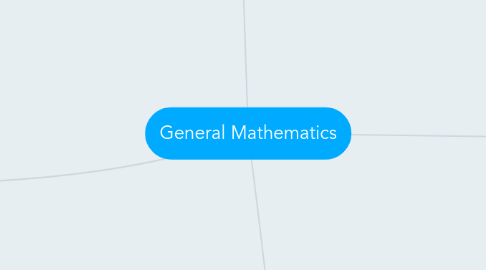
1. Functions
1.1. increasing, decreasing, or constant
1.2. evaluated to give a table of values
1.2.1. used for graphs
1.2.1.1. relative maximum and/or relative minimum
1.2.1.2. domain
1.2.1.3. range
1.3. added
1.4. subtracted
1.5. multiplied
1.5.1. Rational Functions
1.5.1.1. Rational Expressions
1.5.1.1.1. Rational equations
1.5.1.1.2. Rational inequalities
1.6. divided
1.7. composed
1.8. Functions and Their Graphs
2. Exponential and Logarithmic Functions
2.1. Inverse Functions
2.1.1. evaluated by table of values used for graphing
2.2. Exponential Functions
2.2.1. Exponential expressions
2.2.1.1. Exponential equations
2.2.1.2. Exponential inequalities
2.3. Logarithmic Functions
2.3.1. Logarithmic expressions
2.3.1.1. Logarithmic equations
2.3.1.2. Logarithmic inequalities
3. Logic
3.1. Propositions
3.1.1. Conditional Propositions
3.1.2. Compound Propositions
3.1.2.1. Propositional connective
3.1.2.1.1. conjunction
3.1.2.1.2. disjunction
3.1.2.1.3. exclusive
3.1.2.1.4. implication
3.1.2.1.5. biconditional
3.1.2.1.6. respectively
3.1.2.1.7. disjunction
3.1.2.1.8. biconditional
3.1.2.1.9. implication
3.1.2.2. Tautology
3.1.2.2.1. Contradictions
3.1.2.3. Contradiction
3.1.2.4. Contingency
3.1.2.5. Logical Equivalence
3.1.2.5.1. Identity Laws
3.1.2.5.2. Domination Laws
3.1.2.5.3. Idempotent Laws
3.1.2.5.4. Double Negation Laws
3.1.2.5.5. Commutative Laws
3.1.2.5.6. Associative Laws
3.1.2.5.7. Distributive Laws
3.1.2.5.8. De Morgan's Laws
3.1.3. Simple Propositions
3.1.4. Truth Value
3.1.4.1. Truth table
3.1.4.2. Methods of Proofs
3.2. Rules of Inference and Fallacies
3.2.1. Rule of Interference
3.2.1.1. Addition
3.2.1.2. Simplification
3.2.1.3. Conjuction
3.2.1.4. Modus ponens
3.2.1.5. Modus tollens
3.2.1.6. Hypothetical sylogism
3.2.1.7. Disjunctive syllogism
3.2.2. Types of Fallacies
3.2.2.1. Fallacy of affirming the conclusion
3.2.2.2. Fallacy of denying the conclusion
3.3. Methods of Proofs
3.3.1. direct
3.3.2. indirect
3.3.3. existence
3.3.4. nonexistence
4. Basic Business Math
4.1. Money
4.1.1. Loans
4.1.2. Stocks and/or bonds
4.1.3. Interest
4.1.3.1. Simple interest
4.1.3.2. Compound interest
4.1.4. Types of Stock
4.1.4.1. Common stock
4.1.4.2. Preferred stock
4.1.5. Annuities
4.1.5.1. Simple annuity
4.1.5.2. General annuity
4.1.5.3. Ordinary annuity
4.1.5.4. Deferred annuity
4.2. Stocks
4.2.1. dividend/shares
4.2.2. earnings per share
4.2.3. market capilatization
4.2.4. initial public offering
4.2.5. going public
4.2.6. Stock Table
4.2.6.1. 52 week-high and low
4.2.6.2. ticker symbol
4.2.6.3. dividend per share
4.2.6.4. price-earnings ratio
4.2.6.5. trading volume
4.2.6.6. closing price
4.2.6.7. net change
4.2.7. Stock Trading
4.3. Bonds
4.3.1. face value (par value)
4.3.2. coupon
4.3.3. maturity
4.3.4. issuer
4.3.5. redemption date
4.3.6. bid price
4.3.7. yield
4.4. Business and Consumer Loans
4.4.1. Amortization
4.4.1.1. Amortization Schedule
4.4.1.1.1. Period
4.4.1.1.2. Periodic payment
4.4.1.1.3. Interest payment
4.4.1.1.4. Principal payment
4.4.1.1.5. Outstanding principal
4.4.2. Mortage
4.4.2.1. fixed-rate mortagages
4.4.2.2. adjustable rate mortages

